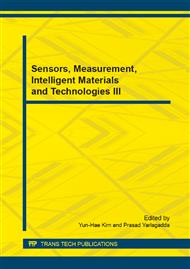p.107
p.111
p.116
p.125
p.129
p.133
p.140
p.144
p.151
Research on Pronunciation Assessment Detection Method Based on 3D Modeling and Sensor Technology
Abstract:
It is necessary for hearing-impaired children after hearing compensation for language rehabilitation, Rehabilitation evaluation system can timely understanding of the effect of rehabilitation, rehabilitation program reasonable.This paper presents multiple feedback method and system for hearing-impaired children pronunciation evaluation based on 3D technology, information technology, the use of modern means of measuring real-time speech. The evaluation system collect the tongue palate, lip face and voice pronunciation information of hearing-impaired children through sensor and voice input devices.The reference value to compare the data with the standard output,The system can overcome the shortcomings of traditional method is subjective.To assess abnormal and the degree of abnormal of hearing-impaired children s function. Provide the basis for the development of language rehabilitation training plan, establish a scientific evaluation method and evaluation system.
Info:
Periodical:
Pages:
129-132
Citation:
Online since:
March 2015
Authors:
Price:
Сopyright:
© 2015 Trans Tech Publications Ltd. All Rights Reserved
Share:
Citation:


